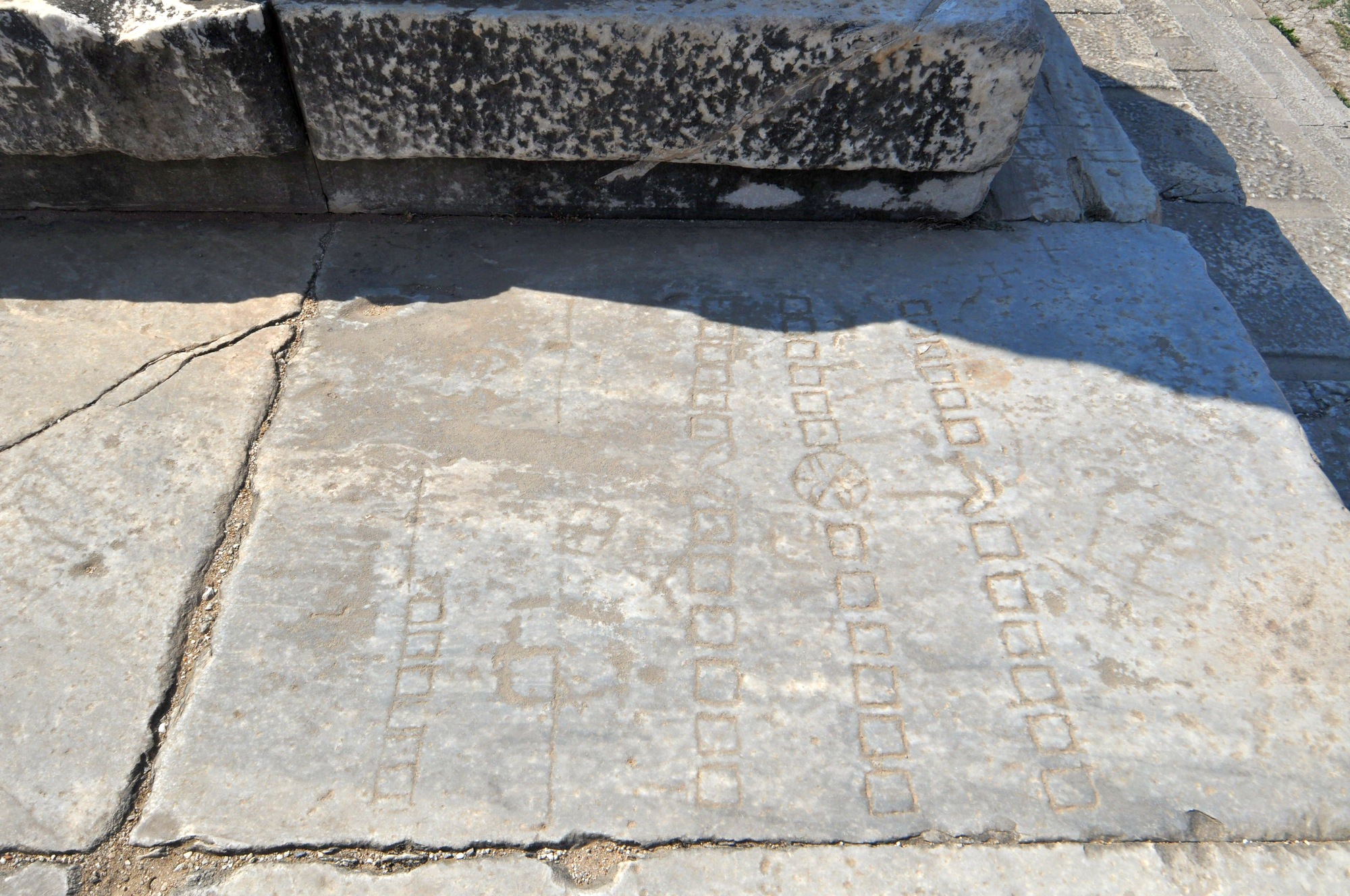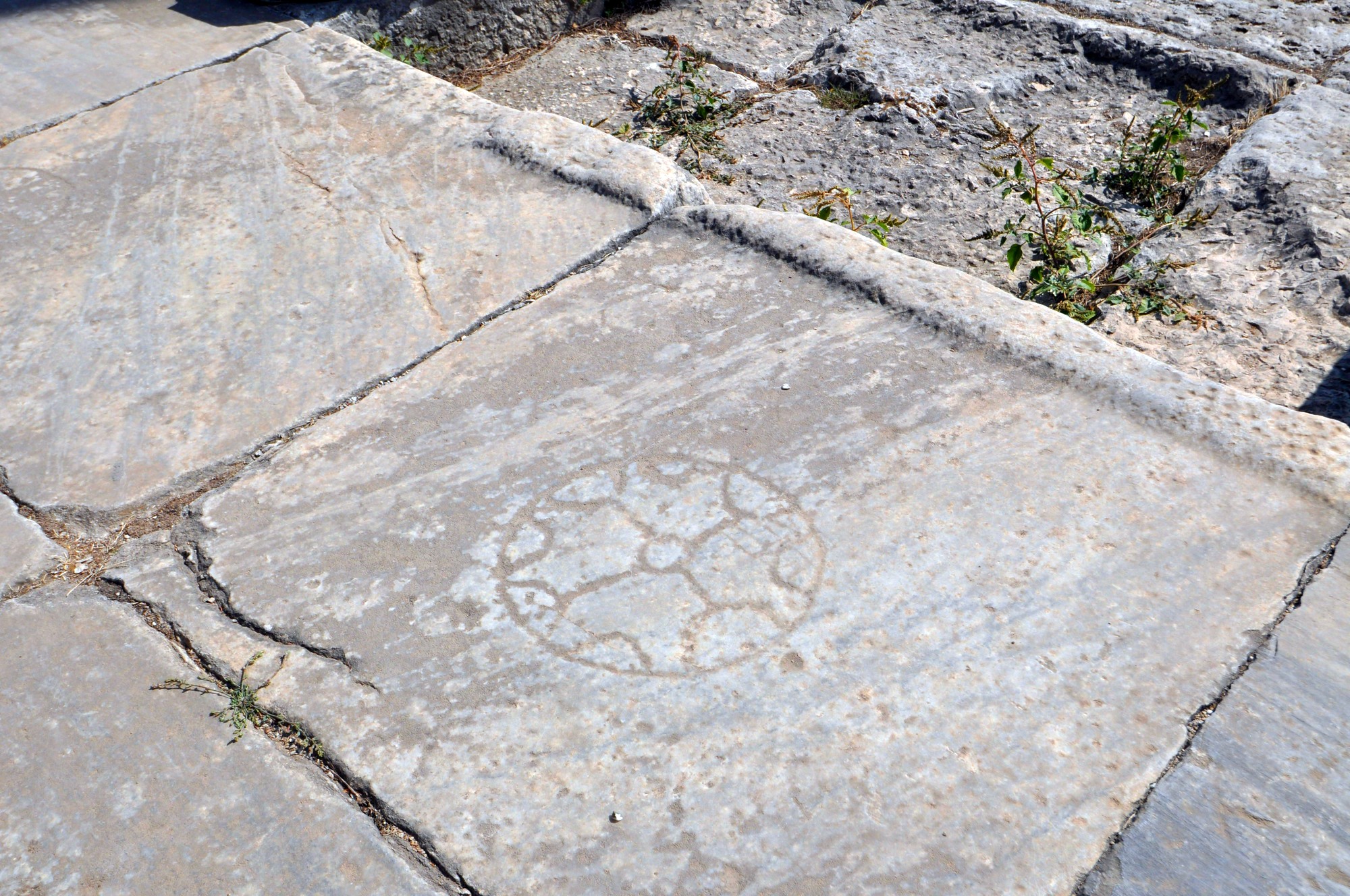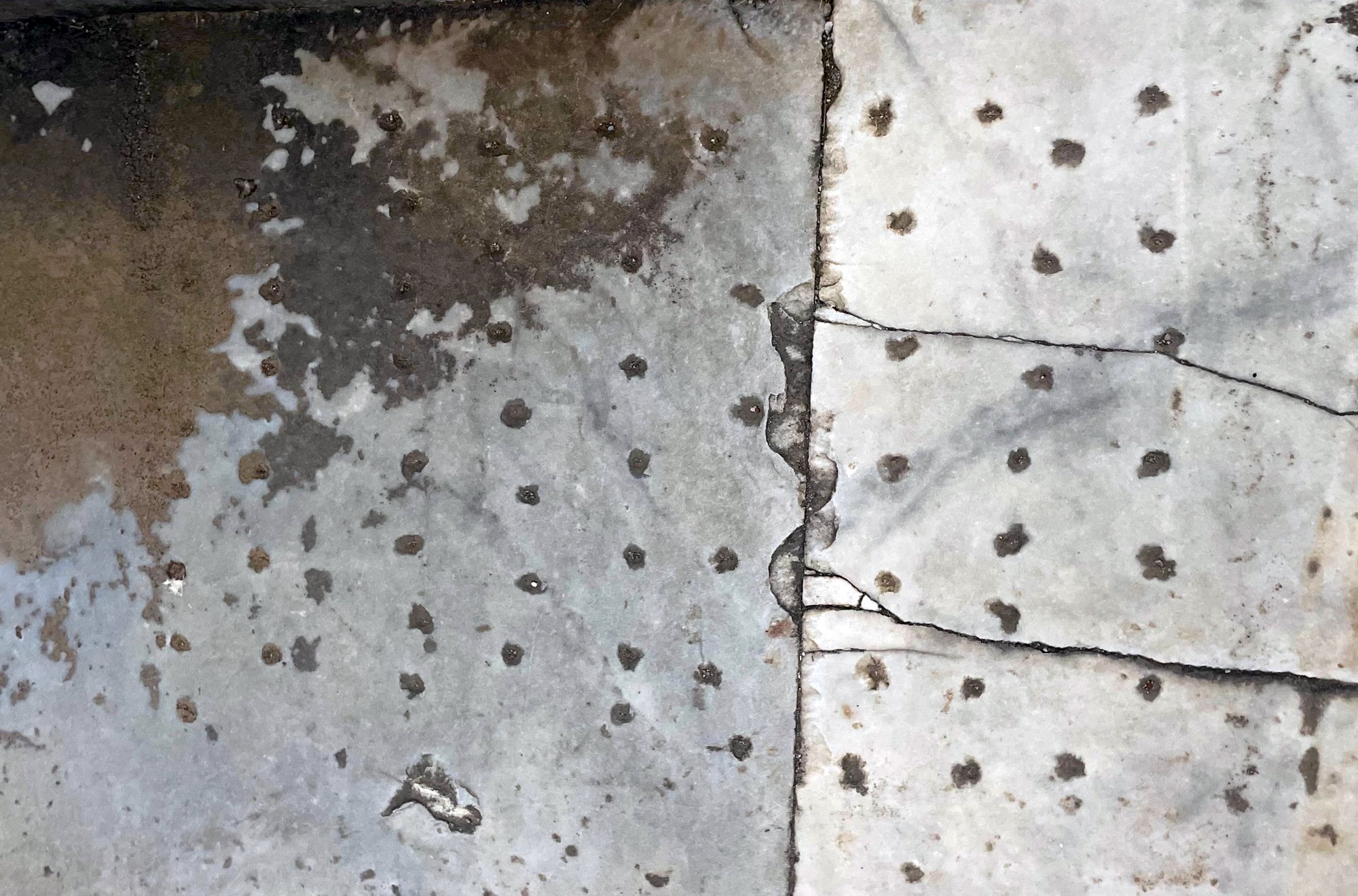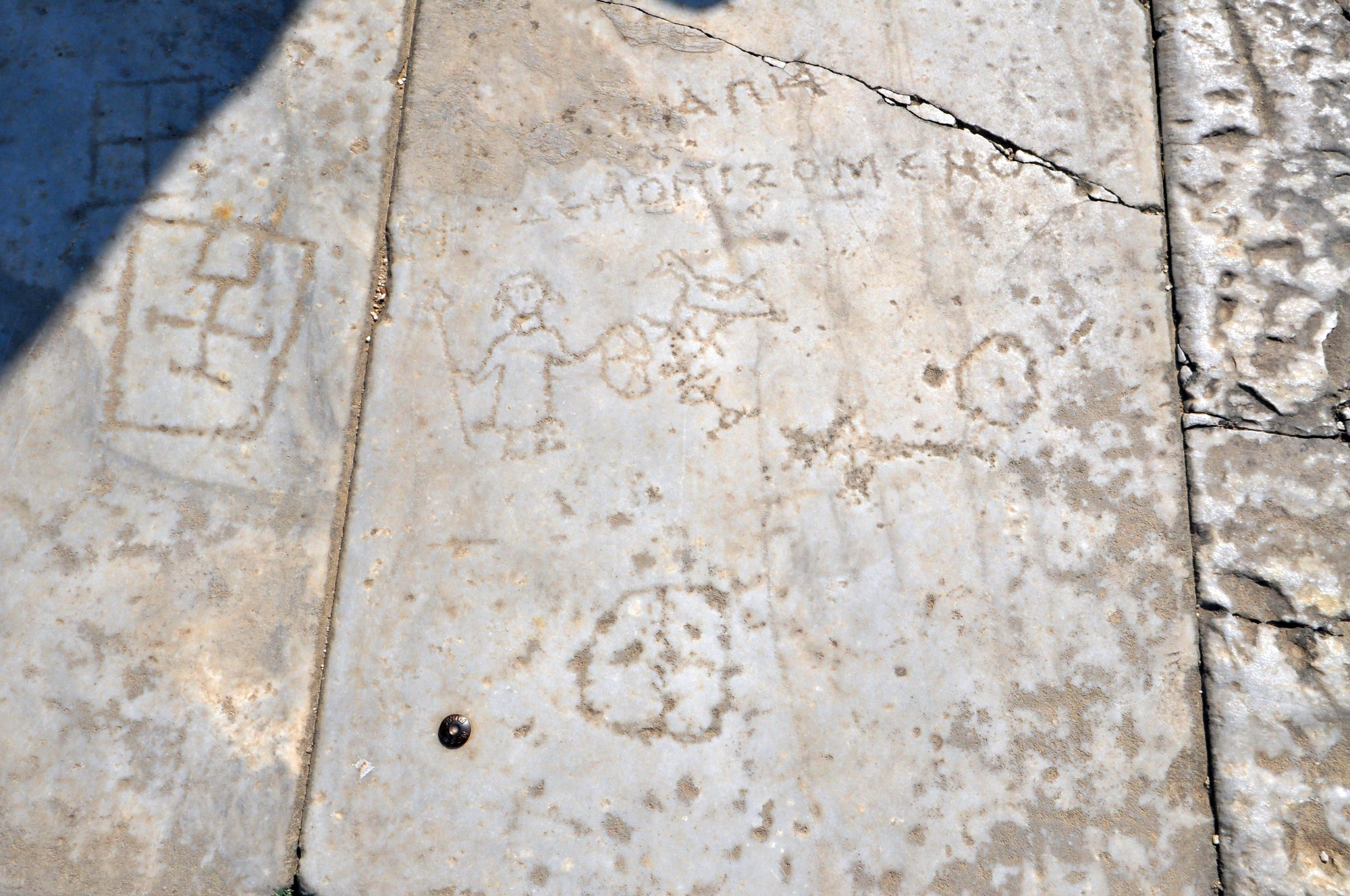Text by our correspondent from Didim, Jay Jean Jackson.
There are many ancient archaeological sites which have graffito carvings etched into the stone floors. I have seen them in many places, Miletus, the Sacred Road, the Temple of Apollo, and Ephesus to name a few and I suspect they would also be present in most Ancient Greek cities. I have always been curious to learn about these, what are they for or what do they mean?
A few years ago myself and Glenn Maffia discovered one of them was an ancient backgammon board, carved into the pronaos at the Temple of Apollo in Didyma, which he later wrote about in his book "Faint Whispers from the Oracle". A recent visit to the Temple reignited my curiosity, so I began to research further.
The most common symbol was a circle, there were a few different variations, but each circle was divided into 8 segments. There are 8 points around the circumference and one in the centre. I discovered the name of this game was called Turni Lapilli in Roman times and sometimes referred to as Rota. It is a simple game that is thought to be similar to Tic Tac Toe. The object of the game involved players trying to move their counters to form a connecting line.
Ludus Latrunculorum, or simply Latrones, the game of Soldiers, is played on a grid of squares similar to the chess or drafts boards of today, a game of strategy which was played throughout the Roman Empire. There are several different interpretations of what the rules were, but they most likely changed over time. It is believed to be a variant of a similar Greek game known as Petteia or Polis, its name appears in Ancient Greek literature from around 450 BCE and was mentioned by many Greek philosophers including Aristotle and Socrates and was also referred to by Homer, the most famous Greek poet. There are also references found in many other texts which suggests it was a popular game in this era. However, not much is known as to where, when or who invented it and the rules of the game have been lost over time.
I have not been able to find any information on what could possibly be a game I also saw on the Pronaos at the Temple, which consisted of a series of dots, similar to the modern game of Battleships. Could this be the lost ancient game of Polis? I guess we will never know, but it would be nice to discover the answer either way.
Duodecimal scripta, later called Tabula, is a game similar to backgammon, another game of strategy and luck played with 3 dice. Roman dice were often made of dried clean and polished sheep bones. This game is reputed to have been a favourite of Roman soldiers. Interestingly, nearby to the games at the top of the steps at the Temple there is also a graffito carving of what appears to be a Roman soldier carrying a sword and a shield. Then writing above the image seems to spell "emori zomenor" - a rough translation of this is "to die in a dream", I am not sure how correct this is, the first word unfortunately is indecipherable. There is also an image of a bird, my research didn’t throw any light on the significance of this so far, if anyone could shed light on this or the translation I would be very grateful. Maybe it could be a prediction echoed by the oracle at some stage.
It is extraordinary to think the games we still love and play today have their roots in similar games that were played by the ancients 1000s of years ago. Although we are always so awed by looking up at the splendour of these ancient sites and wonder at the unfathomable building techniques, it is also thought inspiring to look down and see humble games roughly carved into stones and played by everyday folk of all ages.
- Log in to post comments






















